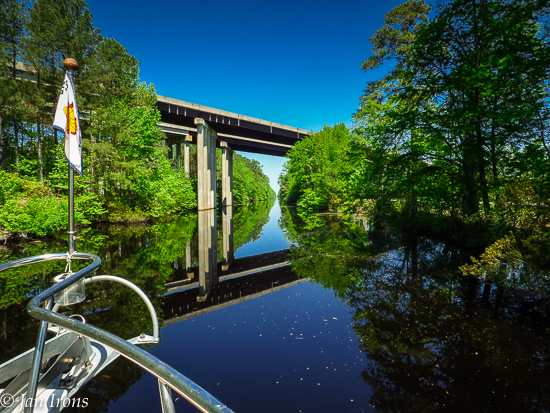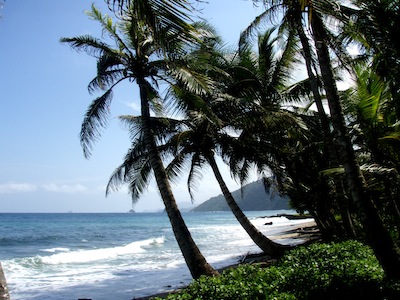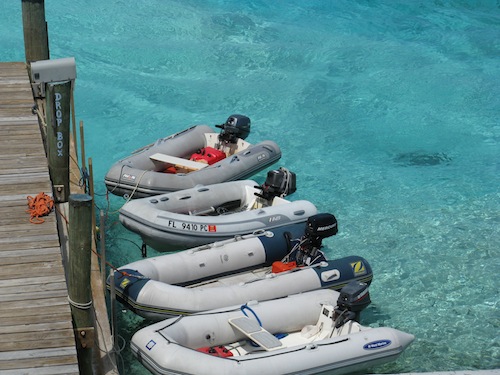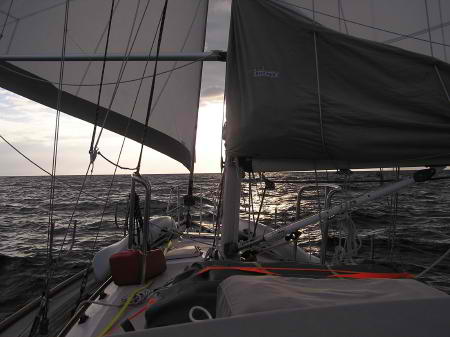Sapzurro, Colombia is a repeat of an old blog I wrote when we cruised the Colombian coastline in the fall of 2007. There seems to be alot of interest in this area, so I thought it might be time for a re-post. Enjoy! ********
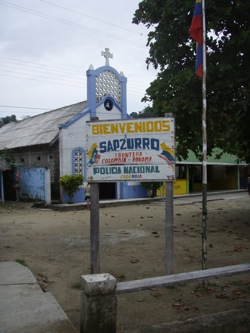
December 1, 2007 …. Sapzurro, Colombia …. Winterlude has now spent almost a month in Colombian waters, most of which we have enjoyed more than any of us thought possible! After cleaning the crop of Cartagena barnacles off the bottom – scraping my knuckles raw in the Rosarios, we were all anxious to continue our adventure along the Colombian coastline.
Literally 2 years ago, it was not safe for cruisers to cruise the coastline of Colombia … still today precautions must be taken … keep in mind, most of the drugs coming out of Colombia are via boat. In January 2007, the Colombian government and Guarda La Costa, met with cruisers at Club Nautico in Cartagena, encouraging them to enjoy the Colombian coastal islands and not have to sail overnight to get to Panama. The new government is very concerned about visitors safety and it’s readily apparent in their actions. Typically the “coastal route” entails daysailing from Cartagena to the Rosarios, then to the San Bernardos, then to Isla Fuerte and then crossing the Golfo de Uraba to Sapzurro, a tiny bay on the mainland at the border of Columbia & Panama. Cruisers following this route are encouraged to sail with a buddy boat and e-mail the Colombian Guarda la Costa every time they move, departures and arrivals at each island.
Our second night in the San Bernardos, just after dark, David & I were sitting in the cockpit, enjoying the last of our dinner when David spotted a menacing dark shape on the horizon just off our stern … too big for a fishing boat & too small for a ship, no running lights, which isn’t totally unusual in these islands. Listening closely we could hear the purr of large outboard engines above the pounding of our own hearts! Until now, we felt totally safe in these islands, not even fishermen have approached to look us over under the pretext of selling fish as in many other islands. Our first inclination was to get the searchlight out & blind the approaching boat. But the cord was totally tangled & we couldn’t get it undone in time … another lesson learned, make SURE the searchlight which we haven’t used since we left the U.S. is ready to go on a second’s notice! Meanwhile the menace comes closer & closer until finally David can make out the diagonal coast guard stripe in the moonlight. Apparently the coast guard got our e-mail saying we were relocating to Isla Tintipan and wanted to come out & check on us. But daytime or lights might have been a nice idea! We’re assuming they wanted the element of surprise in case we were smuggling drugs! They were very professional and it was nice to know they were checking to make sure all was well.
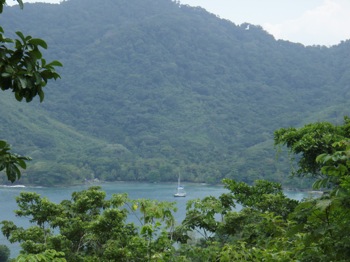
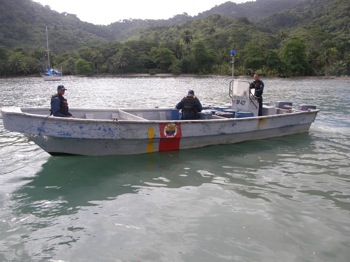
Meanwhile, ten feet under our hull, starfish and small coral heads look up through crystal clear water, small wavelets lap at our hull adding ambiance to the next morning and a warm breeze gently cools the cockpit … a fisherman drifts by totally naked in a tiny wooden cayuco. Pelicans do kamikaze maneuvers, splashing loudly from the heights in their quest for fish. Wavelets lap at the beach to our right. A distant hum marks the approach of a panga filled with Colombians chattering loudly to be heard over the noise of the outboard. The brightly
painted wooden panga is loaded to the waterline – every conceivable part afloat had people! Just before the western end of the island, all twenty guys (we counted as they hopped out) , dressed in jeans and tshirts piled out of the panga, into the water setting a heavy fishing net. The chant they were singsonging as they set & pulled in the giant net wafted across the water. Later, we saw the same group some four miles south after we anchored south of Isla Ceycen to snorkel! Hopefully their day in & out of the water rewarded them with lots of fish to sell – I still cannot believe they were jumping in fully clothed in street clothes! That’s a new one!
We would have liked to explore further at the San Bernardos, but due to the exposed nature of the anchorages, we opted to press on, deciding not to stop at Isla Fuerte, mostly because it’s a single island and like Tintipan has no protection from wind or seas from any direction but north which would be another rolly anchorage.
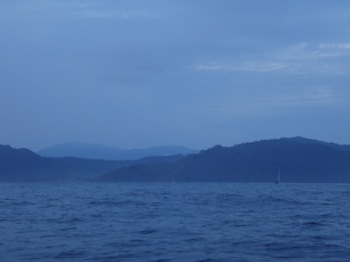
Luckily our crossing was mild, only a couple of ships sighted and one squall that missed us and we arrived just before sun up outside the entrance to Sapzurro. Sapzurro is a tiny beach border community situated in the mountains of the Darien Jungle affording spectacular scenery. Unfortunately, it looked as if we were going to sail right into the surf crashing up from the rocky shoreline – the bay wasn’t visible until we were literally less than a mile out. Luckily the lighthouse was working and we took down sails and motored around until sunrise. In the early morning light, we were all charmed – Sapzurro is the perfect, undiscovered, idyllic hideaway. Because it’s a border town – apparently a couple years ago there was a bloody guerilla confrontation here – the Policia National greeted us as we tied our dinghys to the cement dock. Everywhere there were Marines, busily at work building something just out of sight beyond the point of the bay. The next morning we were greeted by the Guarda La Costa again – different station, of course … this time with a drug sniffing dog. We were boarded and the dog did a very thorough search of the boat. Luckily in contrast to boardings we’ve heard from the U.S. Coast Guard, these guardsmen were very professional and careful with our property. The dog did jump up on our bed & stuck his nose into everything, but they didn’t take up floorboards or any of the more destructive actions reported by others of their U.S. counterparts.
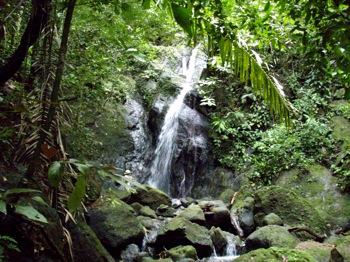
So how did we spend Thanksgiving? In Sapzurro, of course! It’s HOT in Colombia, REALLY hot! The only time I can ever remember having the printing on the plastic bread sack literally melt off onto the countertop! Rayene & I decide that it would be much more enjoyable eating ashore than heating up our boats trying to cook a feast none of us would feel like eating because it’s just too hot! So in the morning, we hiked to the waterfall not far up the beach off Winterlude’s stern and enjoyed the icy cool water. We left just enough time to dinghy back to the boats for a quick shower and then had a mid-afternoon Thanksgiving feast – I had shrimp and David feasted on red snapper – fish, eyes & all, of course, caught earlier that morning by one of the local fishermen.
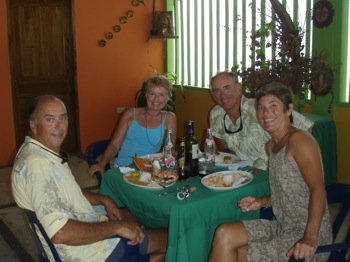
The days here have gone by in a flurry of activity.. the anchorage is somewhat open to the northeast ocean swells so we want to get all the fun stuff accomplished before the waves drive us out! It is strange to be anchored off a beach with a noisy surf!!! Makes it sound like the wind is howling, when in reality, there’s no wind, just the surf crashing.
After exploring the tiny village of Sapzurro – all two main “streets” – no cars or carts, we took our dinghys around the mountain point to the somewhat larger “resort” town of Capurgana. Capurgana is a lively, friendly juxtaposition of old and new Columbia. There are no cars, only donkey carts … a “taxi” is a delightful old man gently guiding his donkey cart. The cart is a flatbed wooden affair with 4 colorful plastic chairs, legs cut off, screwed to the cart. To take the taxi, you simply jump into one of the plastic chairs swinging your legs from the side of the cart! Makes it easy to jump off too! Of course, while walking the mostly dirt, but some cobblestone streets, it’s important to watch out for donkey droppings! Donkey carts transport everything … from the subsistence farmer’s plot in the outlying mountains to the supply boat’s vast mixture of all kinds of “stuff” – from veggies to mattresses & literally everything in between! It is interesting to see the donkey’s tied to the fence with the laundry hanging over the fence to dry while the rooster prances between hooves and they both look over lazily to watch a small plane land at the landing strip next to the road. That evening brought another first, I got my first “cruiser haircut” – Doug cut my hair and did an admirable job, I might add! It was a bit scary, but my excess hair was making my snorkel mask leak & we can’t have that! And I have several hats, just in case. But it’s all good!

Back in Sapzurro, we enjoyed “ice cream” – helados in Spanish, almost daily from the lady named “Sheila” – not sure if that’s the Spanish spelling, but that’s how she pronounces it. Sheila is an entrepreneur … she has small metal containers just the size to put a sweet liquid in & freeze. She completes the fixture by adding a bamboo stick, cut from her own back yard. After freezing, she roams the beach street with a cooler over her shoulder. Café, coconut, raspberry, chocolate, mocha, great flavors and all for 1,500 pesos, which sounds expensive, but ends up being about seventy five cents U.S.!! While the Mideast Peace Conference is being held at Billy’s dorm at the Naval Academy, Winterlude & Kristiana’s crews are busy savoring Sheila’s ice cream and hiking daily … the policia national assure us that it’s totally safe to hike the trails, as long as we don’t venture off the trails and we don’t go after dark. We hiked up to the top of the small rise above Sapzurro to the Columbia/Panama border & took each other’s photos with one foot in Panama and one in Colombia. Rayene & I hiked down the other side to the even tinier village of La Miel … we’re not sure how any of these people make a living, no dock, no road, hmmmm… But we met three kids who hiked over the mountain just before us – we saw them while we were savoring the view from the top – it’s nice to be able to have a conversation of sorts – they live in Sapzarro Colombia, but came to visit their grandparents in La Miel, Panama, just over the mountain! They brought a green coconut as a present! Another little girl was pulling her little sister on an old skateboard with a rope tied around the front wheels. She stopped long enough to find a shell and give it to me as a “regalo” – present. Her beaming smiles made sure that shell will find a place in my souvenirs from Colombia!
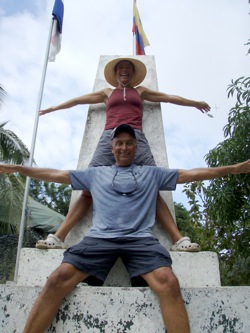
Our last day in Sapzurro – we stayed a week, longer than we’ve stayed anywhere else, David & Doug walking the beach, were invited to chat with a group of “rico’s” that had come in by sportsfisherman boat the night before. Turns out the guy owns the largest boatyard in Cartagena, Todamar, which we had visited! He spoke perfect English & told Doug & David about the security situation in Colombia. Advising us not to sail further into Colombia on this side due to drug trafficking dangers, he added that a resistance group, the FARQ’s, has been forced over the border into Panama and is slowly starving to death. They’re hiding in the mountains. Keep in mind, this region is the Darien, one of the world’s most diverse ecosystems and the largest primary forest in Central America. The mountains rise from sea level and peak in the cloud forest, in between are clear streams, sluggish rivers snaking through marshes, tropical rainforests, thundering waterfalls that cascade from walls of tropical jungle and plunge down vertically cut rock canyons. There is no road through the Darien, the 54 mile jungle stretch is the only breach in the 16,000 mile InterAmericana Highway that reaches from Alaska to the tip of South America. Mr Todomar also told of the new Colombian President’s successes in driving the resistance factions out of Columbia & making the country a great deal safer. Of course, his success has already taken it’s toll, apparently the President’s father has already been assassinated as a warning. But in this man’s opinion, the resistance groups are now nothing more than terrorists and should be treated as such. Apparently President Chavez from Venezuala has been aiding the FARQ’s, but now they’re in a dispute.
More soon from Puerto Perme, Panama, the home of the Anachucuna village of traditional Kuna, but that’s another story & this is too long! ?
HAPPY HOLIDAYS!
David & Jan, s/v Winterlude, Puerto Perme, Panama
8 44.22 N 77 32.69 W (only 14 miles into Panama from the Colombian border)


